Scotchtown
Scotchtown
Address: 16120 Chiswell Lane, Beaverdam, VA 23015
Phone: 804.227.3500
Web site: http://www.apva.org/scotchtown
Associated over its almost three-hundred year history with the names of a number of illustrious early Virginia families, the property called Scotchtown today is most closely identified with its most famous owner, Patrick Henry. Henry and his family occupied the Hanover County plantation from 1771 to 1778, the period of Henry's greatest influence in Revolutionary Virginia politics and government. But he and his family left little mark on the house or grounds, and much of what is portrayed about the property is based on conjecture and assumptions drawn from the customs of the gentry of Piedmont Virginia in that period.
When the Hanover Branch of the Association for the Preservation of Virginia Antiquities (APVA) approached The Garden Club of Virginia in the 1960s about a garden restoration project, both parties quickly recognized that their efforts would be aimed at fashioning a time-appropriate setting for the house rather than attempting to recreate something known to have been in place in the 1770s. Despite extensive archaeological work undertaken before and during the garden and grounds project, most of which elucidated the middle and latter nineteenth-century history of the property, the Club's landscape architect Ralph Griswold was left with little evidence to guide his endeavors. Consequently, his recommendations focused on creating the appearance of an eighteenth-century working plantation without introducing any ornamental gardening or building typical outbuildings for which neither characteristics nor location could be established.
The project entailed the creation of a broad, simple entrance drive, and bordering the property with rail fencing accented by the planting of a variety of trees and bushes, including southern red oaks, dogwood, and serviceberry. Existing trees near the mansion were complemented by new plantings of sweet gum, ash, pecan, and redbud. An apple orchard and kitchen garden completed the feel of the plantation setting. Holly, beech, and magnolia trees populated the edges of the broad lawn, but only English ivy was allowed close to the structure itself. Subsequent enhancements have helped to make this one of the most attractive historic sites in the Commonwealth of Virginia.
This landscape was previously restored by, but is not currently under contract with, The Garden Club of Virginia.
Note:
The images presented here record various stages of the property's landscape restoration. Since additional work has been supported by The Garden Club of Virginia at many properties, these images do not necessarily represent the current-day experience. Also, accession numbers reflect the year in which an image was received by the Virginia Historical Society, not the year in which it was taken.
|
(Click on image to |
Description |
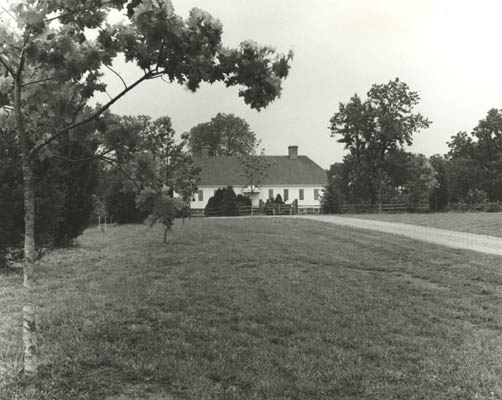 |
The main entrance to the restored Scotchtown is accented in this view by Scotch broom, shadbush, and sourwood. Photographic print, Scotchtown, Beaverdam, Va. |
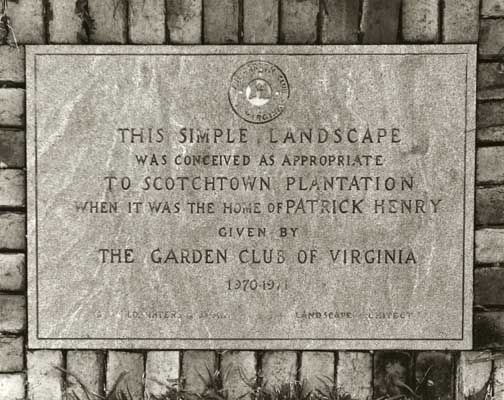 |
A simple plaque testifies to the challenges faced in creating the appropriate environmental setting for the interpretation of Scotchtown in the 1770s. Photographic print, Gardens, Scotchtown, Beaverdam, Va. |
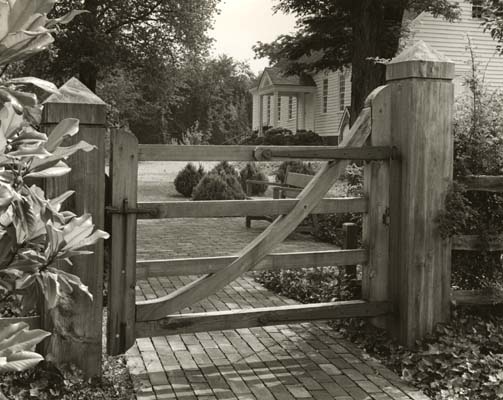 |
The approach from the parking area needed to provide a more casual encounter with the house than that experienced via the main entrance. Photographic print, Gardens, Scotchtown, Beaverdam, Va. |
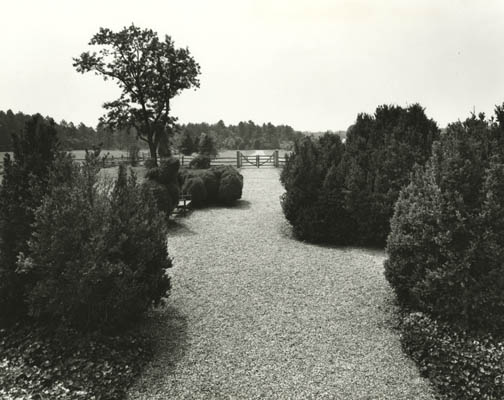 |
View from the house down the entrance road, showing existing boxwood that were retained for the project. Photographic print, Gardens, Scotchtown, Beaverdam, Va. |
 |
A wide variety of plantings accented the long expanses of new rail fencing constructed during the restoration. Slide, Gardens, Scotchtown, Beaverdam, Va. |
 |
Dogwood, ash, sweetgum, and numerous other varieties were planted to supplement the existing trees around the mansion house. Slide, Gardens, Scotchtown, Beaverdam, Va. |
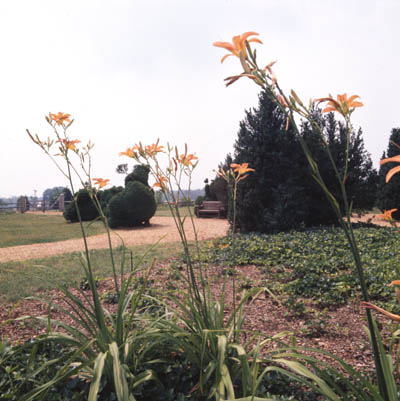 |
Casual plantings along the fencing, including a variety of wildflowers, matched the growth seen in the surrounding countryside. Slide, Gardens, Scotchtown, Beaverdam, Va. |
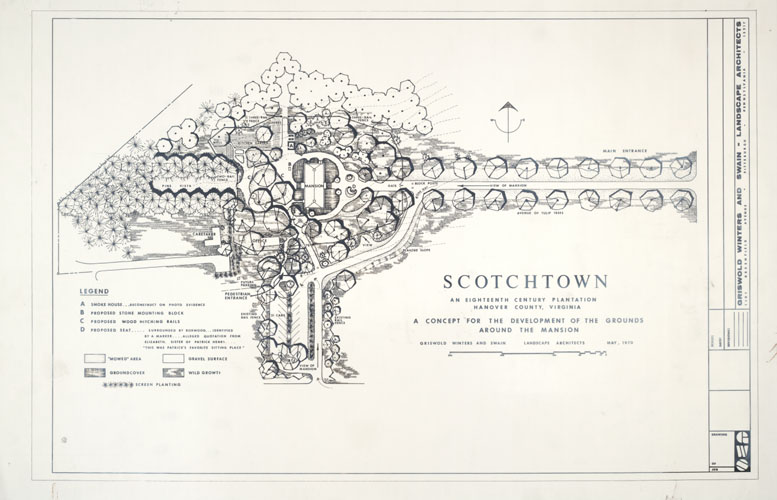 |
Concept plan, 1970 May, drafted by Ralph Griswold. Plan, Scotchtown, Beaverdam, Va. |
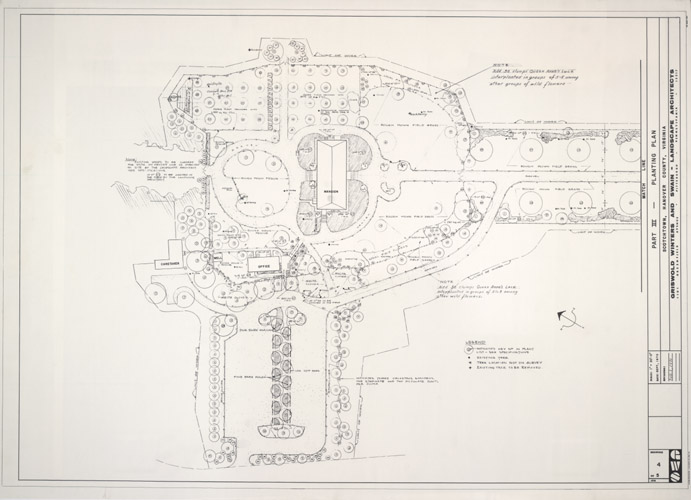 |
Planting plan, 1970 Sept., as revised in early 1971. Plan, Scotchtown, Beaverdam, Va. |
 |
Plan, 1970 Nov. 3, for the construction of gravel paving and drainage, an integral part of the restoration project. Plan, Scotchtown, Beaverdam, Va. |
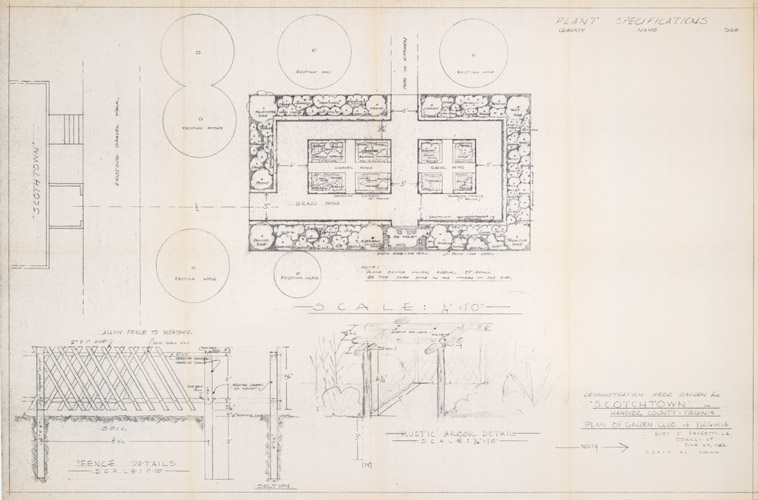 |
Plan, 1982 June 27, by Landscape architect Rudy Favretti for a demonstration herb garden, which was later abandoned. Plan, Scotchtown, Beaverdam, Va. |
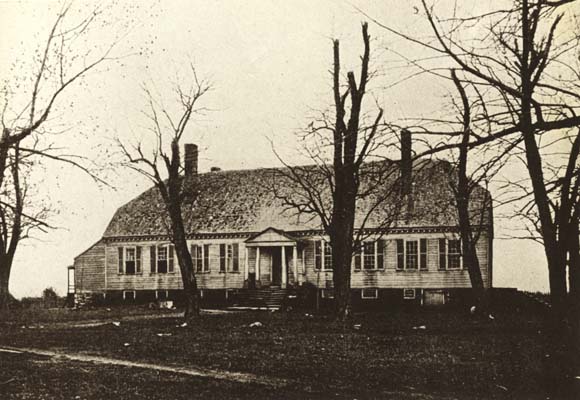 |
A picture of the forlorn and neglected mansion and grounds prompted the Hanover Branch of the APVA to acquire the property in the 1950s. Photographic print, Scotchtown, Beaverdam, Va. |
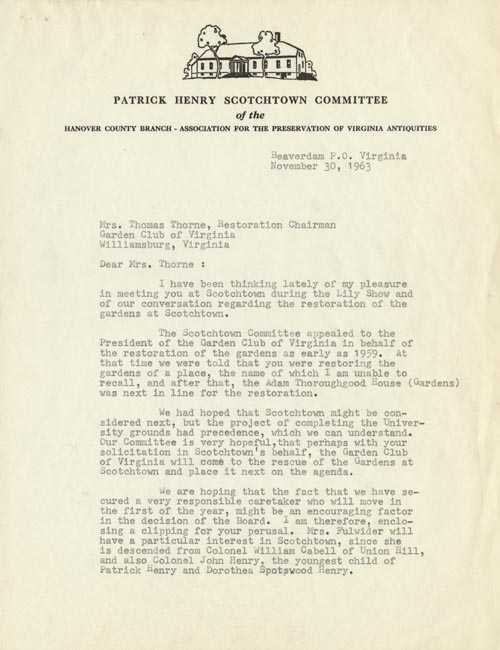 |
Letter, 1963 Nov. 30, of Mrs. Leslie D. Campbell to Mrs. Thomas Thorne, restating the desire of the Hanover County Branch of the APVA to have Scotchtown designated a garden restoration project. Letter, Scotchtown, Beaverdam, Va. |
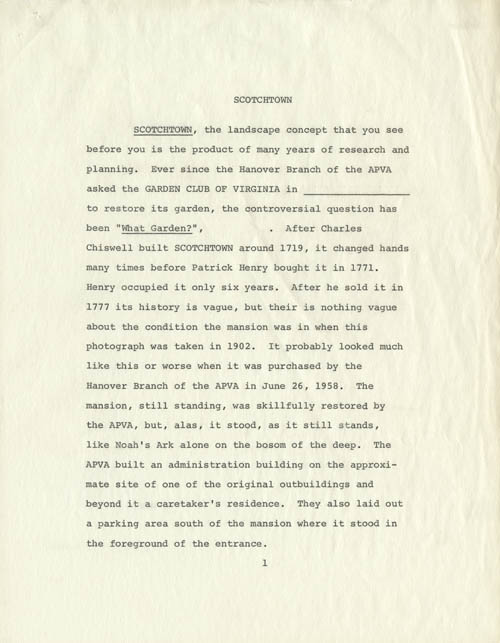 |
Ralph Griswold's proposal to The Garden Club of Virginia for the project at Scotchtown. Letter, Scotchtown, Beaverdam, Va. |
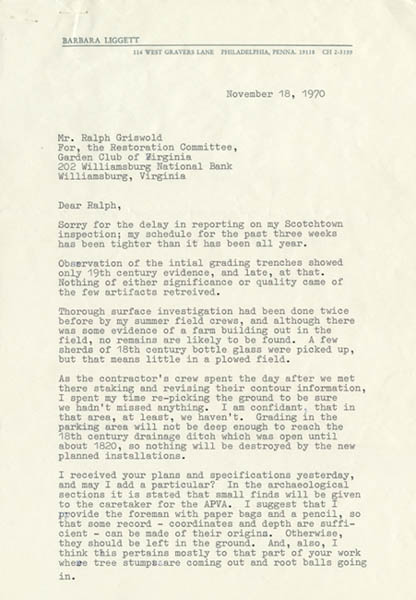 |
Report, 1970 Nov. 18, of archaeologist Barbara Liggett to landscape architect Ralph Griswold on her inspection and digs at Scotchtown. Report, Scotchtown, Beaverdam, Va. |
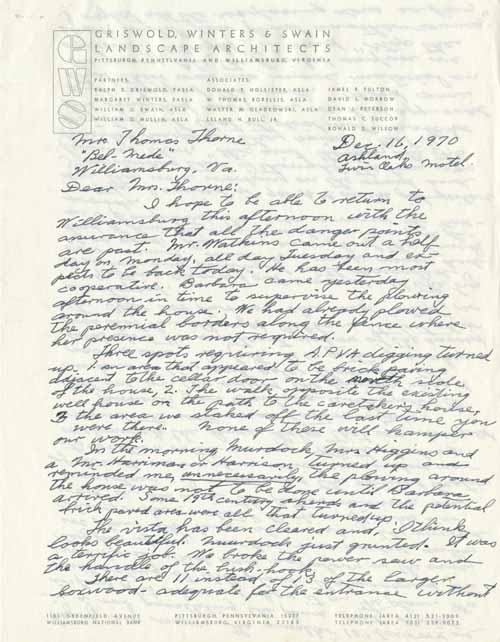 |
Field report, 1970 Dec. 16, of Ralph Griswold to Mrs. Thomas Thorne on the progress made during the initial stages of the project. Report, Scotchtown, Beaverdam, Va. |
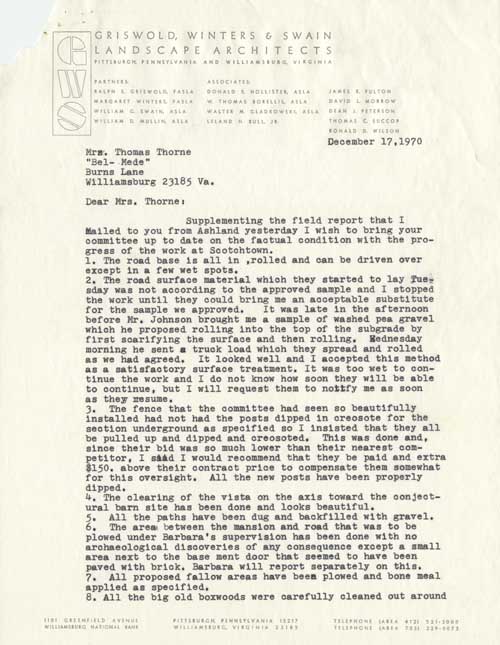 |
Formal report, 1970 Dec. 17, of Griswold to Mrs. Thomas Thorne noting problems with road work and fencing but pleasure with the creation of a vista for the house. Report, Scotchtown, Beaverdam, Va. |
 |
Report, 1971 Feb. 1, of Barbara Liggett to The Garden Club of Virginia Restoration Committee on archaeological findings during Nov.-Dec. 1970. Report, Scotchtown, Beaverdam, Va. |
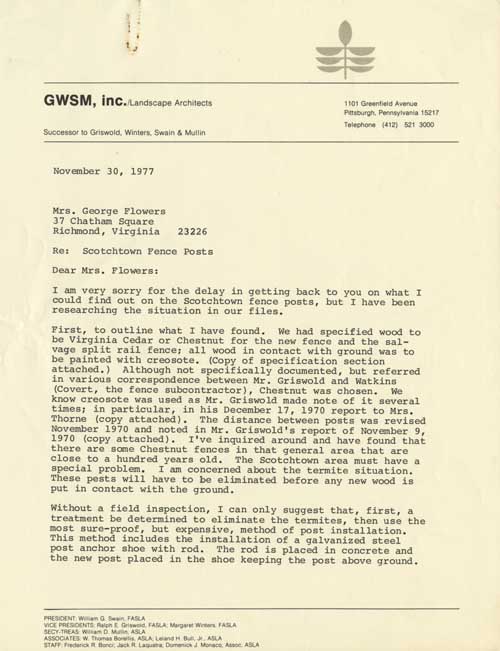 |
Letter, 1977 Nov. 30, of W. Thomas Borellis to Mrs. George Flowers regarding termite problems with the fencing at Scotchtown. Letter, Scotchtown, Beaverdam, Va. |
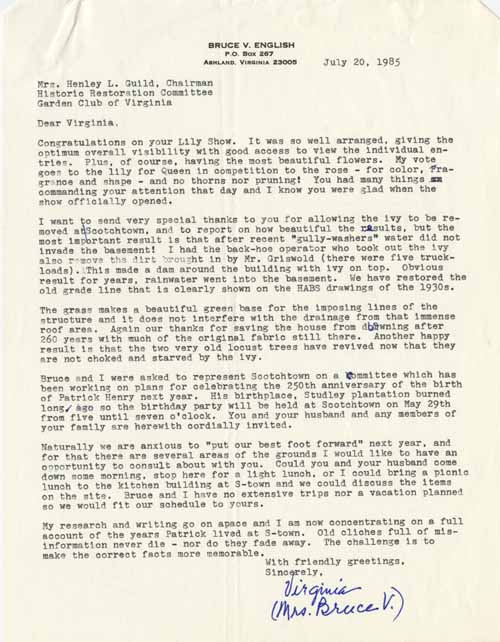 |
Letter, 1985 July 20, of Mrs. Bruce V. English to Mrs. Henley L. Guild regarding removal of dirt and ivy from around the Scotchtown mansion. Letter, Scotchtown, Beaverdam, Va. |
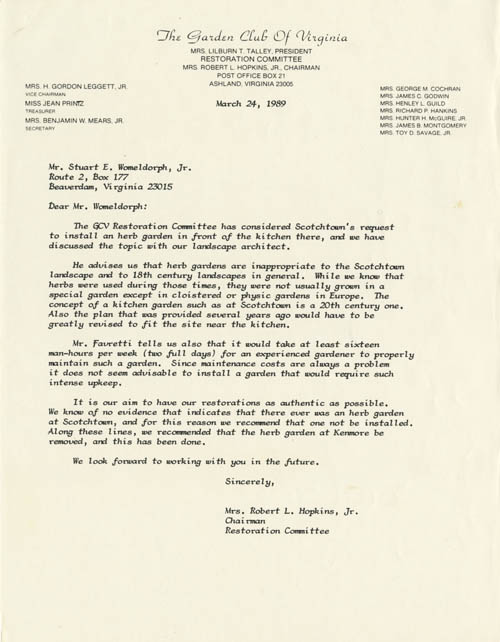 |
Letter, 1989 March 24, of Mrs. Robert L. Hopkins, Jr., to Mrs. Stuart E. Womeldorf, Jr., announcing the Restoration Committee's opposition to the creation of an herb garden at Scotchtown. Letter, Scotchtown, Beaverdam, Va. |
Browse more images
If you would like to browse The Garden Club of Virginia collection in the online catalog, click here.
Last updated March 15, 2011
